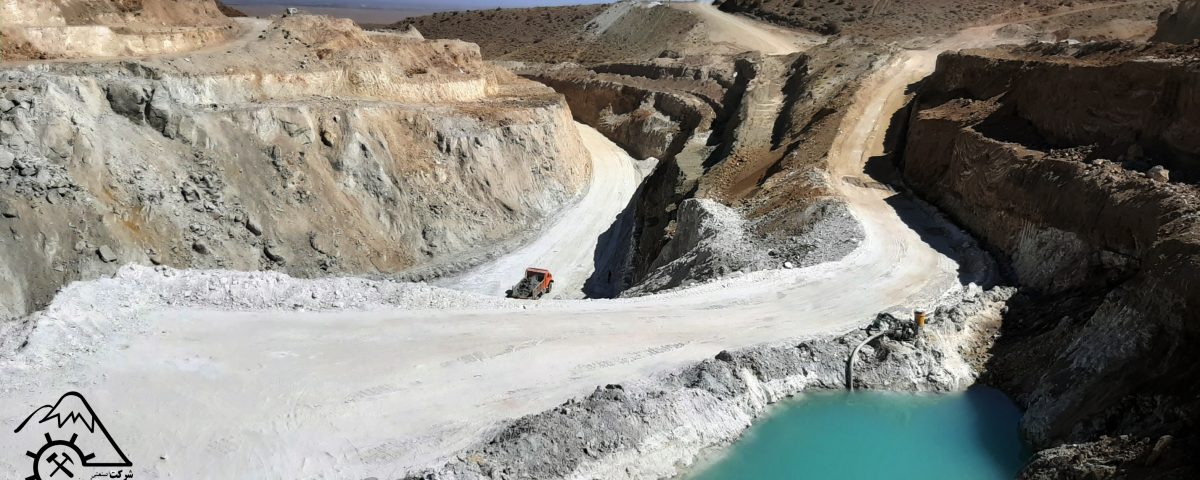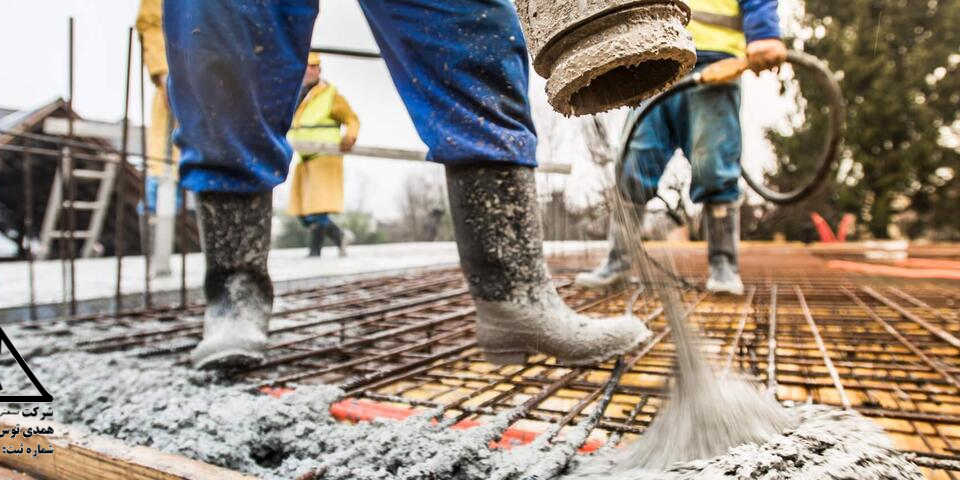
انواع خاک های صنعتی
November 3, 2020Types of kaolin reserves
Types of Kaolin deposits and extraction methods
Introduction
«معدن» یا «کانسار کانی» یا به صورت خلاصه «کانسار» به جای انباشت طبیعی فلز "Mineral" or "mineral deposit" or "deposit" for short, refers to the natural accumulation of various metals or rocks of economic value, and mining or mining is the act of extracting valuable minerals or other materials from the earth's crust and usually from mines. It becomes. Mining actually means extracting valuable minerals or other geological materials from deposits or deposits in the ground, usually extracted from ores, veins, joints or crevices, rocks or placer. These reserves form a significant economic product and resource for miners.

Ore obtained from the mine including metals, coal, sand, petroleum clay, Gemstones, Limestone, gypsum, rock salt, potash, sand and clay. Mining is required to obtain any material that cannot be produced in the laboratory or factory through agricultural processes. Mining in a broader sense includes the extraction of non-renewable resources such as oil, natural gas or even water. To ensure economic production with safety, the mine must be prepared during its working life with principled design and planning. That is, according to the geometric characteristics of the deposit, the conditions Geology Region, economic and environmental considerations; Select the appropriate extraction method
کائولن
The origin of kaolin
Most of the economic deposits of kaolin (non-refractory soils) are limited to the alteration of volcanic acid rocks. In general, in kaolin, in addition to kaolinite, quartz and feldspar, there are other minerals that strongly affect the physical behavior of the kaolin production process. Impurities may include iron hydroxide, iron oxide, pyrite, titanium, and compounds containing carbonates or organic matter.

Kaolinization means the alteration of feldspars or materials of a feldspar nature, the erosion and emergence of clays in its general sense, and kaolin in its detailed sense. Special conditions, both in terms of the mineralogical and chemical composition of the primary rock and the physical conditions in which alteration occurs, are suitable tools for the formation of kaolin. It should be noted that the stability of precipitating minerals against alteration is not the same and in addition, the pH of the environment has a decisive effect on alteration products. Feldspars are more vulnerable to decomposition than other minerals. If feldspar does not remain in the first stage of decomposition, environmental conditions cause all of their alkalis to be removed and converted to clay or hydrated aluminum silicate. In this type of decomposition, depending on the specific conditions of the environment and the type of decomposition, different clay minerals are formed, the most important of which are kaolinite, hallucite, montmorillonite and illite. The formation of kaolinite in an acidic environment is possible, and this action causes the alkalis resulting from the decomposition of the rock, especially its sodium and potassium, to be removed due to water currents. If the medium is alkaline, the alkaline material from the decomposition of the feldspars remains in the medium, and most of the montmorillonite or chlorite clay is obtained. Therefore, pH is one of the main causes of environmental degradation. It is now accepted that the end result of feldspar alteration is the formation of bauxite. Once the conditions in this process are met, the alteration progresses step by step to the final product. Transforming each step into another requires a proper environment and nature. So each of them stops an alteration at any step that is not provided, and it is as follows:
Feldspat→Mica →Hydromica →Montemorillonite →Kaolinite → Bauxite
Types of kaolin reserves
Kaolin deposits are formed according to how they are formed in two primary and secondary forms:
Early Kaolin deposits
Weathering, Hydrothermal and Solfatara.
Primary kaolin deposits are formed in situ by the decomposition of some minerals, such as feldspar or other aluminum silicates, and their conversion to kaolinite. In hydrothermal deposits, kaolin is the result of hydrothermal alteration. Thus, hydrothermal solution colder than 300 ° C (whose pH is acidic) inside rocks containing aluminosilicate minerals (such as feldspars, feldspar, mica, etc.), washes away Ca ++, K +, Na + ions, and other sediments. They increase with H +. Most of these deposits are associated with the hydrothermal water system, which derives its heat source from volcanic rocks. Hydrothermal kaolinite deposits are often located in fault zones, except in porphyry deposits that cover a wide area. Most of Iran's kaolin deposits are due to alteration of igneous rocks (rhyolite and andesite) and mainly in the volcanic belts of the third period, especially in the Eocene. These deposits are associated with terrestrial rocks except in one case which is of Jurassic age and is located in eastern Iran (Kaftar Kooh).
In sulphate deposits, rocks are altered in volcanic fissures or sulfur fissures and in the final stages of acidic volcanic activity. Vapors or hot waters rich in sulfur alter the volcanic rocks as they pass deep upwards. It is usually formed due to the presence of sulfur alunite. Sulfates of kaolin sulfase are usually rich in silica and are therefore hard and coarse. These types of deposits are generally drawn in one direction. ل The shape of sulfate deposits is controlled by cracks and open horizons that allow hot water to move. The age of these deposits, like weathering deposits, is not related to the age of the parent rock, so the parent rocks are much older than kaolin itself.
Secondary Kaolin reserves کائولن
Sedimentary, kaolinite, general wing and refractory soil.
Types of extraction methods in mineral deposits
Many minerals are extracted from deposits that are located on the ground - in shallow areas (maximum depth 150 meters: Shallow Deposit) or in deeper areas (depths greater than 150 meters: Deep Deposit). After the depth and specifications Deposits Or the same mineral reserve was determined, depending on the economic conditions and available facilities, preparation and extraction operations are carried out by open or underground method. It is mined openly when a deposit is placed near the ground.
Open or surface extractable reserves

- Massive Deposit
- Bedded deposits: These are deposits that have a sedimentary origin or are highly expanded, depending on geological conditions, horizontal or sloping. (Coal, salt, bauxite, phosphate, iron, potash)
- Alluvial Deposit
Extraction methods in open or surface mines
Mechanical Methods
There are methods in which a mechanical process is performed in dry environments to separate materials from the ground and about 90% of the world's mineral production is obtained using these methods. The extracted deposit with these methods can have any resistance and is usually dense.
- Direct cutting extraction methods (contour or box or agar): Auger mining or countour strip mining
- Area mining method
- The classic open source extraction method Area mining method
- روش استخراج کواری: quarry mining
A– Extraction method with direct cuts (contour or box or agar)
This method is usually used for coal extraction and is used in cases where the mineral is in a more or less horizontal layer and is located in mountainous areas with steep slopes. At the beginning of the work, an initial incision is made along the valley, where the coal is exposed, and the tailings are collected at the bottom of the valley, and the mineral below the tailings is extracted. And continues in the same way, as a result of which these parts are formed in the form of sinusoidal satellite mounds, eventually the thickness of the waste reaches such a level that extraction is no longer possible by open method.
If the amount of mineral left is high, it should be extracted by underground methods, otherwise, if it is not economically justifiable, the agar extraction method is used to continue the extraction, which is usually used together with the contour method.
In this method, a significant amount of coal can be extracted from the machine to dig a hole in the charcoal layer with a thickness of 2.3 layers and penetrate to a depth of 60 meters in horizontal holes. The most important sub-methods of this extraction method are:
A) Mountaintop removal method: In this method, all the available waste is removed and the mineral beneath it is completely and 100% extracted. (valley fill) say. After the extraction operation, the area, which was in the shape of a peak, becomes flat because, in addition to extracting the high parts, part of the valley around the mine is also filled as a result of the initial cutting and the increase in the volume of rocks.
To) Box cut method: This method is the same as the previous methods and the most important difference is that the extraction (cutting) is done from the mineral storage center.
C- The classic method of open extraction (step or excavation)
The open method is one of the surface mining methods that is preferably for metal deposits such as Iron ، مس ، سرب و روی و … بکار برده میشود. در این روش استخراج به صورت پلهپله و تا عمقی از ذخیره معدنی که عملیات اقتصادی باشد، ادامه پیدا میکند. تصویر افقی پله ها معمولا دایره یا بیضی است و پله های مختلف به وسیله جاده مورب (ramp) به یکدیگر ارتباط دارند. در این روش از سطح معدن آنقدر باطلهبرداری میشود تا به ماده معدنی دسترسی حاصل شود. باطلههای روی ماده معدنی پس از برداشت باید عمدتاً به خارج از محدوده معدن منتقل شده و در آنجا انبار شوند

Only those parts of the tailings that may be used for road construction, road repairs, construction workshops and filling the pit are within a certain range, and for the rest, a specific location must be considered outside the mine and in a manner A certain damped. The classical open method is somewhat different for single-layer, multi-layer and mass deposits:
A) Single layer deposits: Depending on the thickness of the tailings and the layer, one or more steps are constructed in the tailings and minerals so that the tailings stairs are sufficiently ahead of the mineral.
B) Multilayer deposits
C) Mass deposits
انواع ذخاير کائولن انواع ذخاير کائولن




1 Comment
با سلام ودرود )چگونه میتوان از پودر کائولن در تولید,پودر رنگ استفاده کرد?که دارای کیفیت هم باشد?09152475504